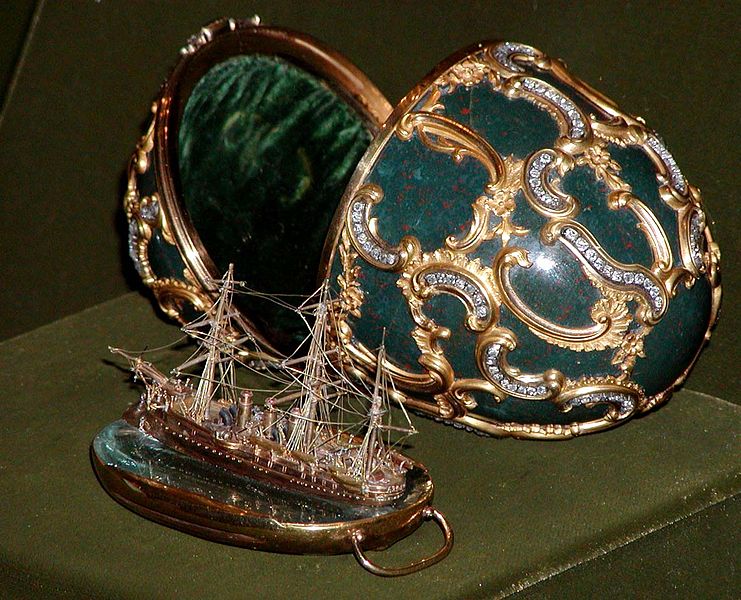
Meanwhile, in Victorian era Russia, an entire other universe of interesting things were happening. The Tsars were at their most opulent and various seeds of unrest were stirring, led by self proclaimed anarchists long before the communists, which would one day coalesce into the Revolution.
But we are will not concern ourselves with such heady matters. Today we are interested in the most batshit, over the top easter eggs ever conceived.
Seriously. These are Easter eggs. Because nothing celebrates the death and resurrection of the man who made famous the phrase “It is easier for a camel to go through the eye of a needle than a rich man to enter the Kingdom of Heaven” better then taking a bloody EGG, A (expletive) EGG, and putting enough bling on it to feed the entirety of Siberia for 3 years.
The first Faberge egg was made in 1885 by the goldsmith Peter Faberge, by request of Tsar Alexander III. His wife, the Empress Maria Fedorovna had had a fancy easter egg as a little girl which she had adored but had long since lost.

Peter Faberge created the Hen Egg which the Tsar then presented to his wife. Maria was nothing short of delighted by it. Alexander gave Faberge a pat on the back and told him to make more, do whatever he wanted, and go nuts with it.
So he did. The designs became more and more elaborate and the entire royal court would wait with baited breath to see what faberge would pull off each easter. No one, not even eh Tsar was allowed to know ahead of time what the year’s egg would look like, although the one thing that could be counted on was that each egg must contain some type of surprise inside the egg itself.

50 egss were made specifically for the royal family, although the Faberge house became the darling of the royal court and eventually all of Europe.

The true Faberge eggs are those made between the first one in 1885 and the last one, unfinished in 1917 when the Russian revolution hit. The Romanovs were all killed of course and when in 1918 the Bolsheviks nationalised Peter Faberge’s company, he and his family left Russia on the last diplomatic train out of the country. The overthrow of Russia by the Communists broke Faberge’s heart and he never recovered emotionally and he died in 1920 in Switzerland.

In 1927, Stalin, desperate for cash, sold most of the eggs. Of the 50 original eggs only 42 are currently accounted for and of the 8 lost eggs, photos exist of only 2.

Faberge’s descendants have kept the family name and jewellry business alive and well, continuing to make fine jewelry.







Let's connect! Here is where you can find me: